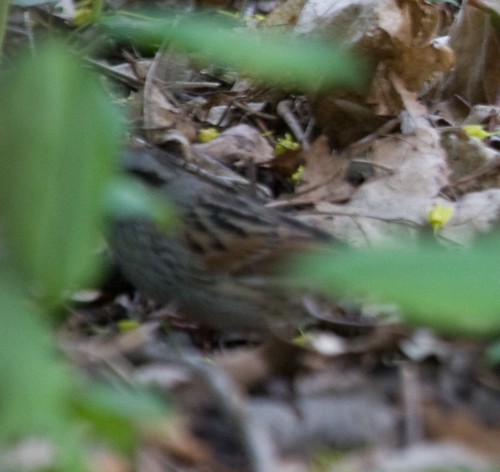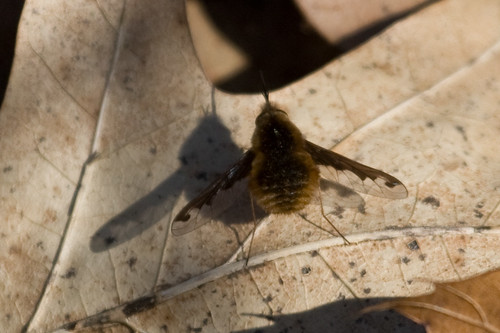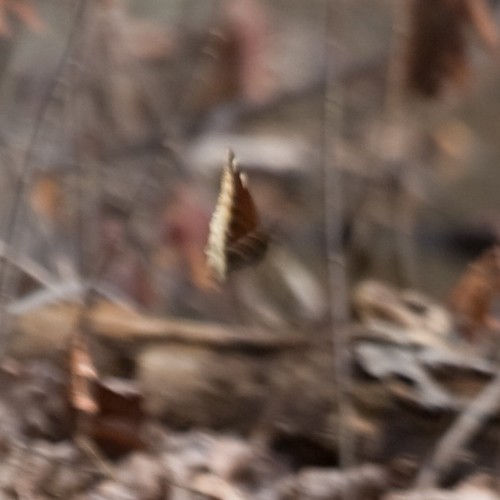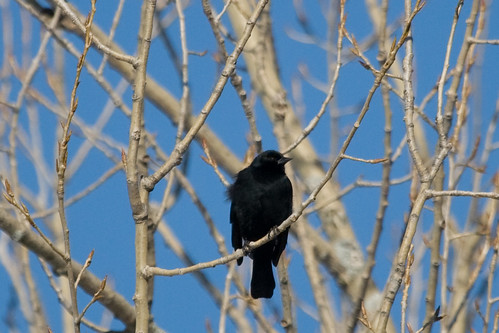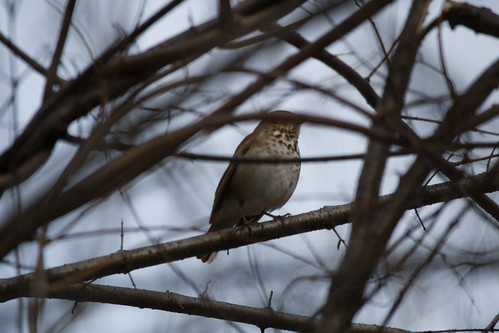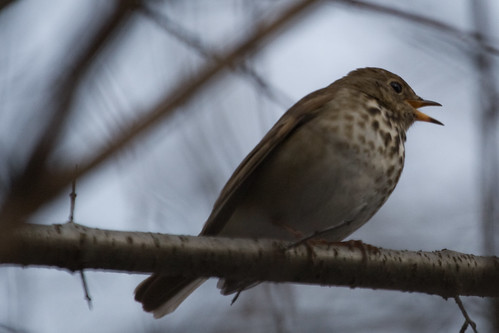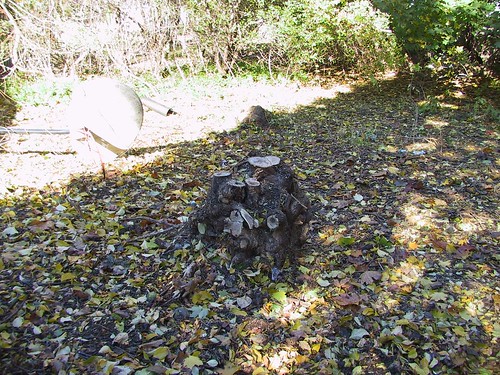Taken 5/8 at Beaver Brook.
Category: WTOW
Quiz 8 Answer
So we have some interesting looking insect. It’s got a very round body with some black on light brown, long legs, and wings with lots of black along the front. It’s on an oak leaf, so we can see that it’s fairly small but not a tiny insect.
Although there’s quite a few insects that look somewhat like this, I’m not about to go through them all. This is a Bee Fly in the family Bombyliidae. With about 800 species in North America, there’s a lot to filter through. Fortunately this one has a very distinct wing pattern. It’s the Greater Bee Fly (Bombylius major).
These happen to be extremely common in early spring around here. For more information, see bugguide.
Quiz 8
Answer 6 and 7
Finally something other than birds.
For #6, it’s a mostly black thing with a creamy yellow border. It appears to be flying. With triangular wings like that, it’s got to be some type of Lepidoptera (moths and butterflies). The obvious candidate is the Mourning Cloak (Nymphalis antiopa), which is exactly what it is.
Mourning Cloaks are quite common, especially in early spring where they are one of the first butterflies on the wing. In Massachusetts, I’ve noticed them mainly from the end of March to the beginning of May, late June and July, and again at the end of butterfly season in October. The early ones are overwintering adults, the middle ones are likely the newly emerged adults, and the late ones are the June brood looking for winter homes.
For #7, it’s some sort of flower. I’ll confess that I don’t know much about flowers and hadn’t even identified this when I posted it. Searching the web appears to come up with a Snowdrop (Galanthus sp).
Quiz 6 and 7
5 Answer Finally
Yeah, I’ve been neglecting this.
Clearly a black bird. It has a thin, pointed bill, a dark eye, and is a smooth black without any glossy color. Of the blackbirds, Rusty (and the very unlikely Brewer’s) has a pale eye, Common Grackle is much bulkier, glossier, and with a bigger bill, and Brown-headed Cowbird would have a brown head and thicker bill. That leaves Red-winged Blackbird, which this is.
At the time, it was one of the first ones to arrive for the spring. Now they’re everywhere.
Quiz 5
Week 4 Answer
We have a perching bird that appears to be brown above, whitish below with some spots. The head is blocked by a branch, as is most of the tail. There’s still plenty to see.
Among the brown birds, we have sparrows, wrens, thrushes, Brown Creeper, a flycatcher or two, Horned Lark, some swallows, Brown Thrasher, and Ovenbird. Clearly it’s not a lark, creeper, swallow or flycatcher. No wren has spotting like this bird, so we’re down to sparrows, thrushes, and Brown Thrasher.
The bird looks a bit big and long for most sparrows. Fox Sparrow is a possibility, but that should be redder and is more streaked than spotted. Song Sparrows would show a more patterned face.
Brown Thrasher is bigger and redder. The tail is huge, which would be noticeable, even mostly hidden here. So we’re down to thrushes. Wood Thrush would be more heavily spotted. Although the Catharus species are very difficult, we have a shortcut here. This is a winter photo, and Hermit Thrush is the only thrush that wouldn’t be extraordinary in midwinter.
Here’s another view, which shows the face much better.
I actually did have a guess this week. It wasn’t Hermit Thrush, but it’s a start. One of these weeks (although I’m skipping another week now as I was away over the weekend and didn’t get anything together).
Quiz 4
Week 3 Answer
As I said, this one wasn’t really fair. Here’s a more typical example:

(Found with creativecommons search)
It’s one of the invasive honeysuckles (Lonicera sp). It had grown completely out of control in the yard and ended up taking over the entire back yard before we finally had it cut down. The birds did like it, but there’s plenty of native plants they like as well.
